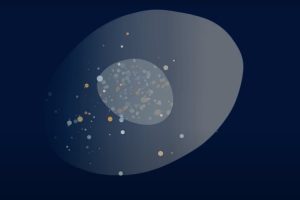Controlling and Reanimating the Brain
Neuroscientist Emery Brown on the anesthetic state, the arousal network, and medical coma
This broadcast was recorded at the 50th anniversary of the Beatles’ Abbey Road album, which came out in 1969, just two years after Sgt. Pepper’s Lonely Hearts Club Band. For me personally, at my age, that was one of the most memorable events of my life because it changed the whole culture of pop music forever; it’s gone downhill since then. One of the tracks on Abbey Road is called ‘Here Comes the Sun’, with George Harrison. I’m sure, certainly, every European know the tune. It’s a wonderful, beautiful tune.
A few years ago, I thought it was strange that he should have come up with that because, at that time, I started my own research on the interaction between genetics and sunlight. I actually worked on snails, and that seems a very strange thing to work on. In some ways, that refers to something I’ve talked about in another one of these broadcasts, which is about genetic diversity, because in the 1960s, until here, at University College London, people started looking at protein variation; if you’re interested in diversity, you could only work on a very limited number of creatures. Snails were one of them because the snail I work on has differences in colour and the number of stripes or bands on its shell: they vary from very dark to very light and from pink to yellow, and there are various other genetic differences. So we could go out, and we could count genes in different populations.
So when I remembered it was the 50th anniversary of the Abbey Road song, I thought, I tell you what, I’ll write a book about it. In fact, that book is now written, and it’s coming out in June 2019 in English. It’s called Here Comes the Sun, and the subtitle of the book is ‘How it feeds us, kills us, heals us and makes us what we are’. I’m completely astonished by the recent developments in the effects of sunlight on the human frame.
Of course, sunlight feeds us because without sunlight we wouldn’t have photosynthesis, we wouldn’t have plants, we wouldn’t have food. But sunlight kills us too: plenty of people die from heat shock.
I spent many years after the snails working in Death Valley in California on heat relationships in fruit flies in Death Valley. And if you’re out in the sun in Death Valley, you can easily be killed; people are killed frequently in Death Valley, less so now because they have phones, so they can call in a helicopter. But it’s easy to be killed by being too hot.
People also know, of course, that you’re killed if you’ve got light skin by skin cancer. The skin cancer discovery was made in the 1930s in the United States Navy. The physicians of the US Navy decided to look at the health of their sailors compared to people who were working on land. They did that, and they found something quite striking: the sailors had a high rate of skin cancer on their arms and on their faces, exposed parts of the body, and they died at quite a high rate from skin cancer. That’s because ultraviolet light can cause cancer, we all know that, and everywhere across the world, certainly in Britain, in southern Russia, in Australia and New Zealand, people slap on the sun blockers to keep the ultraviolet out, and they’re wise to do so. The highest rates of skin cancer in the world are in Australia and New Zealand. Switzerland, where people go skiing, has a very high rate of skin cancer. I myself never sunbathe because of that, because I believe it to be dangerous.
So, the sun turns out to be an astonishing agent of good health. Quite recently, there’s been a survey in Sweden which followed 50,000 women for five years and classified them on their exposure to sunlight. They had three groups: those who were very keen on sunbathing, perhaps used sunbeds and went to the Mediterranean on holiday; those who were moderately interested in sunbathing and didn’t do much about it; and those who almost never went out and got no sun. They found for middle-aged women a three-year difference in life expectancy between those two groups, the least sun and the most sun, and that’s the same or more than those who smoke versus those who don’t smoke. So, the scourge of the shadows is just as dangerous as the scourge of the cigarette, which is completely unexpected.
But what’s even more unexpected is that it turns out that sunlight is very effective against infectious diseases, too, particularly tuberculosis. Tuberculosis still kills people across the world; it was the biggest killer of all in the 19th century, and it’s still quite common in parts of Europe and in parts of Russia; it’s coming back in Britain because people aren’t taking precautions against it. So it’s a killer. For many years, it was treated with sunlight, and that’s because there’s a related condition, which is a skin disease which is horrible disfiguring boils and pustules on the skin, which a Dane in 1903 discovered could be cured with ultraviolet light. This was caused by a bacterium, which is the same bacterium that causes tuberculosis.
So in the 1920s the fashion arose to take people with tuberculosis and put them in sanatoriums. In Switzerland or in Britain, where people have no money, the schoolchildren were taken to seaside hospitals where they were told they had to lie in the sun.
When I was five, I sat under an ultraviolet light to give myself sunlight because it was said to be good for you, and it was good for you. But how can sunlight kill a bacterium? It kills the ones on the face because the bacteria don’t like the ultraviolet light; it just kills them like that. Indeed, if you go to a tuberculosis clinic, you will find that in the clinic, there are ultraviolet lights everywhere to kill the bacteria as people cough them out.
But it goes more than that. What actually happens is that ultraviolet makes vitamin D in your skin, and vitamin D is known to be good for you in many ways: for your bones, for example. But it also turns out to attack infectious diseases. How does it do that? It generates a protein called cathelicidin, which is a natural antibiotic in your body. So if you are lying in the sun, you’re doing exactly the same thing you were doing in a clinic in Switzerland in the 1930s as in Thomas Mann’s famous book ‘The Magic Mountain’ which is about people with TB dying of TB and trying to kill it with sunlight. You were actually taking an antibiotic 20 years before antibiotics were invented because your body makes that antibiotic in sunlight that cures your diseases.
I have to tell you I have a house in France and I spend a lot of time there. One of the reasons I go there is because I remember my experiences in Edinburgh, which is a very beautiful city but has less sunshine than any other city in Europe apart from Reykjavik in Iceland. And I’ve vivid memories of the sun never coming out, getting more and more depressed and miserable because the clouds were always there. And then the sun would come out, and we were like, oh God, thank God for that, here comes the Sun! But actually, what’s going on is when the sunlight strikes your skin, it’s making hormones which make you happy. These are the hormones which give people a sense of happiness. If you’ve finished the race, the body is really toned up, you feel really great: they call it the rush, and it’s made by some sunlight on the skin. So what starts with snails in valleys in Yugoslavia ends with the psychology of happiness among the Scots. And that’s the beauty of biology: it links such different things together so easily.

Neuroscientist Emery Brown on the anesthetic state, the arousal network, and medical coma

Blocking an oxygen sensor in a breast cancer tumor impairs its ability to metastacize

Biophysicist Leonid Mirny on mutation balance, vulnerability of cancer, and its new explanatory paradigm